What is Bias: Hidden Impact on Packaging Design Choices
Ever wondered what is bias and how subtle preferences can impact your brand’s success? This article explores how unconscious biases in decision-making can influence your packaging choices for items like stickers, bags, and labels. You’ll discover common cognitive biases in design, such as personal preference or confirmation bias, and learn how they might lead to ineffective packaging.
Crucially, we also clarify the technical meaning of “bias cut” in textiles, particularly for woven labels. Gain actionable tips to mitigate these influences and make informed, objective decisions for packaging that truly resonates with your target audience and elevates your brand.
1. What is “bias”? Why it matters for your product packaging?
1.1 What is bias?
Bias is like having a favorite. It means you might like one thing more than another, or believe one idea more easily. This often happens without us even thinking about it; it’s called unconscious bias. This can change how we make choices, affecting our decision-making processes. For example, imagine you always pick the red candy because red is your favorite color, even if the blue candy tastes just as good. That’s a small bias.
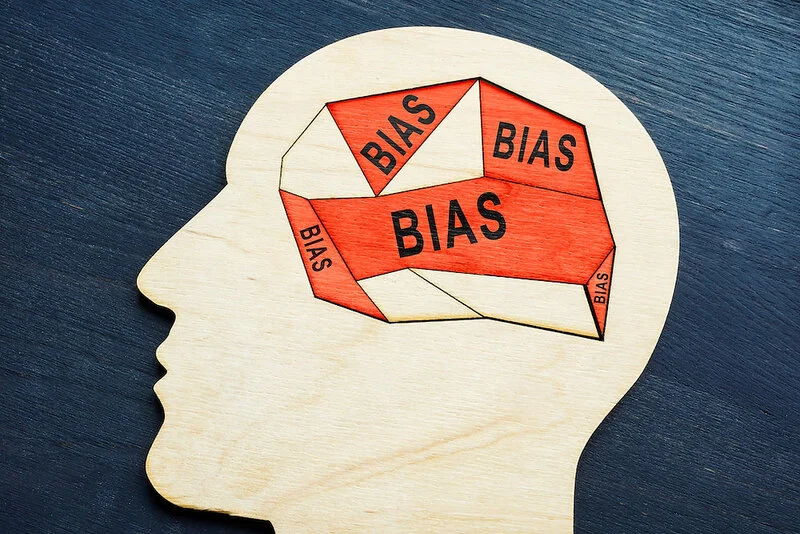
1.2 Why thinking about bias is key for your packaging
When we pick designs for our product packaging, like stickers, bags, labels, or tags, these hidden likings (biases) can make us choose things that are not the best for our brand or what our customers want. This can make our packaging effectiveness lower, meaning it doesn’t work as well. It can also change how people see our brand, which is our brand perception.
1.3 Packlove’s aim: Helping you choose packaging wisely
At Packlove, we want to help you know about these things. Our main goal is to help you make smart choices for your packaging. We want your packaging to really help your brand succeed.
2. Understanding bias in your branding and packaging decisions
2.1 How our brains can trick us: A quick look at bias
Our brains are very busy and use shortcuts to think fast. These shortcuts can sometimes turn into biases, and this is normal for everyone. When these biases affect design choices, they are sometimes called cognitive bias (in design). Having a bias doesn’t mean you are bad at design; it’s just how minds often work. These influences on branding choices can happen without us knowing.
Packlove Experience Example: “At Packlove, we often see people pick colors or styles they personally love for their brand. This is natural! But we help them check if these personal favorites will also be loved by their customers. Sometimes a favorite color might not give the right message for a certain product.”
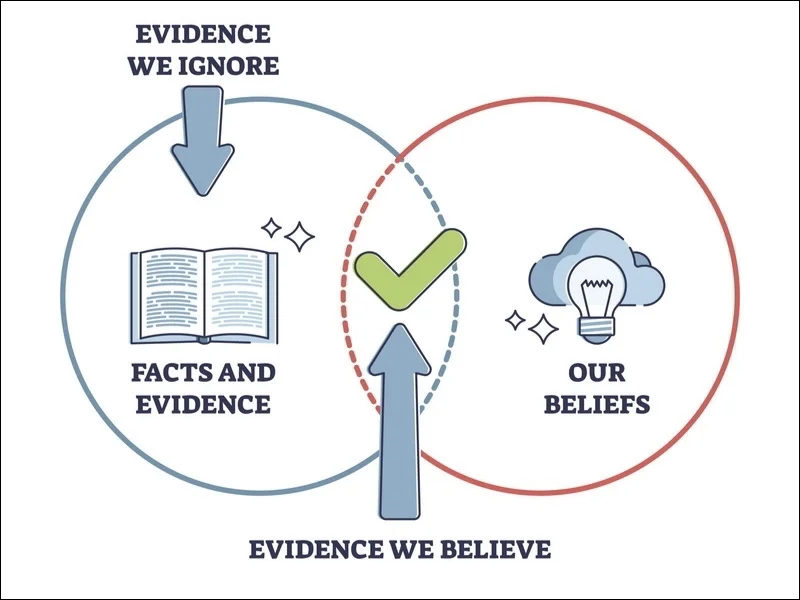
2.2 Common biases you might meet when designing your packaging
Let’s look at some common ways our thinking can be biased when we choose packaging. Maybe you’ll see one you know!
“I Love It, So Everyone Will” Bias (Personal Preference)
This is when you think that because you love a certain color, style, or material for your packaging, all your customers will feel the same. You might forget to think about who your customer is and what they like.
Example: “You love bright neon colors, so you want neon pink zipper bags (plastic bags with a zip closure) for your handmade, all-natural soaps. But, people buying natural soaps might expect to see softer, earthy colors like green or beige. Your neon pink might not say ‘natural’ to them.”
Packlove Tip: “When choosing designs for your product tags (small cards attached to products) or stickers (adhesive labels), Packlove suggests thinking first: ‘Who am I selling this to? What colors and styles do they usually like for this kind of product?'” This approach helps you avoid personal bias when designing product tags. It’s about understanding preference in design.
“See? I Was Right!” Bias (Confirmation)
This bias makes you only look for and listen to things that agree with what you already think. You might ignore anything that says your idea might not be the best.
Example: “You believe a very detailed, fancy design is perfect for your heat transfer labels (labels applied to fabric using heat and pressure, often tagless). You ask your best friend, who always loves your ideas, and they say it’s great. But then, someone you don’t know well says it’s ‘a bit busy and hard to read.’ You might ignore this comment because it doesn’t fit what you want to believe.” This is an example of design bias.
Packlove Experience: “We encourage our customers to get feedback from different kinds of people, not just those who might agree with them. This helps make sure their branding choices are strong.”
“If They’re Doing It, It Must Be Good” Bias (Bandwagon)
This is when you see many other businesses using a certain style of packaging, like plain brown kraft paper for everything. You think it must be the best choice, so you do it too. You don’t stop to think if it’s really right for your special brand and product. This affects your material selection.
Example: “Many small bakers use simple clear bags for their cookies. You decide to do the same for your fancy, gift-worthy macarons. But maybe a nice box or a colorful poly mailer (lightweight, durable plastic shipping bag), if you ship them, with a custom sticker would make your macarons feel more special and match your higher price.”
Packlove Question to ask yourself: “Does this packaging style really tell my brand’s story, or am I just following what others do?”
“First Idea is Best” Bias (Anchoring)
This is when you get stuck on the very first idea for your packaging, or the first material someone suggests. This first idea becomes your ‘anchor,’ and you compare everything else to it. This can make it hard to see other, maybe better, options. This shows the need for “objective selection for packaging.”
Example: “Someone tells you that simple paper tags are cheapest. You get fixed on that idea. You don’t fully look into other cool options Packlove offers, like textured paper tags that feel more luxury, or even small rubber labels (flexible labels made from PVC or silicone) if they fit your product, because the ‘cheap paper tag’ idea got stuck in your mind.”
Packlove Solution: “When you talk to Packlove, we can show you a few different options for your needs. This helps you see more possibilities beyond just the first idea.”
2.3 Bias isn’t always bad, but awareness is key
Sometimes your first feeling or idea, your intuition, can be very good! But it’s important to know that this feeling might be a bias. Knowing this helps you check your idea. Is it really the best, or just a comfortable habit or old thought? The decision impact can be good if you are aware.
Packlove Insight: “Trust your gut, but then double-check it! Ask yourself: ‘Why do I like this idea so much? Is it truly best for my customers and my brand?'”
3. Spotting bias: Real examples in packaging design
Let’s see how these thinking biases can show up in real life and lead to packaging choices that might not work so well.
3.1 Color choices gone wrong
Story Example: “Sarah makes yummy organic dog treats. Her favorite color is bright pink. So, she decides to use bright pink for all her zipper bags and labels (this is personal preference bias). But, many people who buy organic pet food look for colors like green or brown, which feel more ‘natural.’ Sarah’s bright pink bags might not give the ‘organic’ message to her customers.” This is “what is bias in choosing branding colors for packaging.”
Packlove Solution Thought: “At Packlove, we might ask Sarah: ‘What colors do your ideal customers usually connect with ‘organic’ or ‘natural’ for pet products?’ This helps think about color psychology in product branding.”
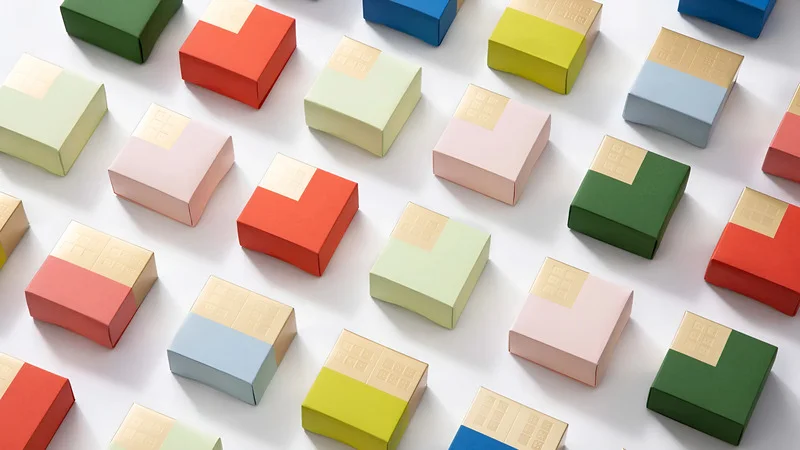
3.2 Material myths
Story Example: “Tom is starting a business selling special coffee beans. He heard that plain brown kraft paper bags are the most ‘eco-friendly.’ So, he only wants kraft paper bags (this is anchoring bias and reflects preconceptions in material choice). He doesn’t look into other options.
Maybe some newer plastic-lined kraft bags from Packlove would keep his coffee fresher for longer, which is also good for the environment because less coffee gets wasted. Or maybe some of Packlove’s poly mailers are recyclable and great if he ships coffee.”
Packlove Solution Thought: “Packlove offers a wide range of material samples to challenge and inform material choices. We could show Tom different bag types, explaining how they protect coffee and their environmental aspects, helping him make a choice based on facts, not just a belief about material selection.”
3.3 Style that misses the mark
Story Example: “Maria makes beautiful, soft, handmade lace scarves. Her own style is very modern and bold. She designs her product tags with sharp shapes and very bright colors (personal preference bias). The tags look cool, but they don’t match the gentle, handmade feel of her scarves. This is a design bias that might confuse customers about her brand identity – is it bold or gentle?”
Packlove Solution Thought: “We would suggest Maria think about words that describe her scarves, like ‘soft,’ ‘delicate,’ ‘handmade.’ Then, Packlove could show her tag materials (like soft cotton paper) and font styles that match those words, helping her design tags that truly fit her brand.”
3.4 Ignoring what customers say
Story Example: “A new t-shirt brand creates a cool, artistic heat transfer label. They show the design to a few people. Some say the fancy writing is pretty but a bit hard to read fast. The designer really loves the fancy writing, so they think those people just ‘don’t understand art’ (this is confirmation bias, ignoring feedback they don’t like). They use the hard-to-read label. They missed a chance to make an audience-calibrated design that everyone could easily read.”
Packlove Tip: “For things like heat transfer labels on clothes, it’s usually important that people can read the brand name or size easily. Packlove can advise on font choices that look good AND are easy to read.”
4. The downside: How biased packaging choices can hurt your brand
So, what can happen if our biases make us choose the wrong packaging? It can cause some real problems for your brand.
4.1 Talking to the wrong crowd
If your packaging shows your biased likes instead of what your customers like, it might not get their attention. Your best customer might just walk past your product. This means your packaging effectiveness is low, and it can hurt your brand perception.
Packlove Thought: “Your packaging is like your product’s first ‘hello’ to customers. If it doesn’t speak their language, they might not say ‘hello’ back.”
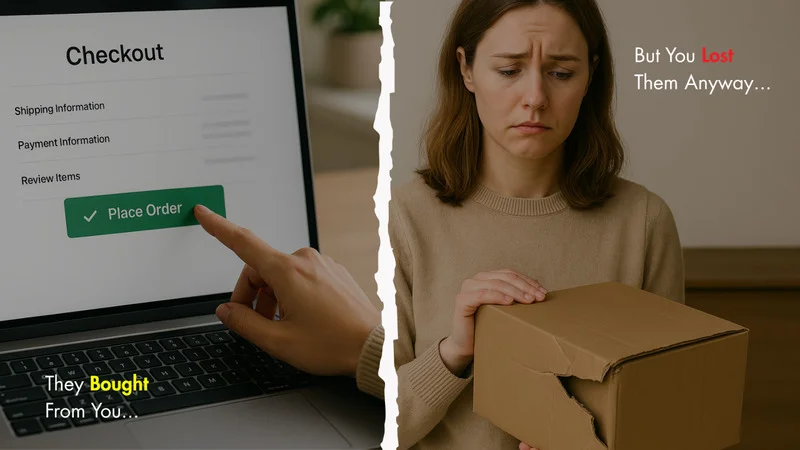
4.2 Looking out of step or unprofessional
Packaging that doesn’t fit your product, like cheap-looking labels on a special, expensive item, or seems mixed-up can make your whole brand identity look not serious or confusing.
Packlove Example: “Imagine a beautiful, handmade leather bag. If it has a flimsy paper tag, it feels wrong. A nice, thick card tag or even a small metal logo patch (a small, often embroidered or rubber piece with a logo, sewn or ironed onto products) from Packlove would make it look much more professional and match the quality of the bag.”
4.3 Wasted money and effort
You spend time and money to design and print custom stickers, tags, or bags. If these choices are made because of bias and they don’t help sell your product or build your brand, then that money and effort are wasted. This is a bad decision impact.
Packlove Advice: “It’s better to think carefully and choose the right packaging first, even if it takes a little more time. This can save you money in the long run.”
4.4 Losing chances to truly connect with customers
Great packaging is a chance to tell your brand’s story and make customers feel happy they bought from you. Biased choices, like a confusing message on your zipper bags, can mean you miss this important chance to connect, impacting how customers perceive your brand—whether it’s on zipper bags or any other packaging.
Packlove Idea: “Your zipper bag for coffee could have a small, friendly note about where the beans come from. This creates a nice connection that a plain bag would miss.”
5. A special technical “bias”: Understanding “bias cut” in fabric labels
Now, let’s talk about a different kind of ‘bias.’ This one is not about how we think. It’s about how fabric is cut. This is very important if you want custom woven labels (labels made by weaving threads together, like on clothing necklines) for clothes from Packlove. This is a special textile terminology for fabric.
5.1 What is “bias cut” in fabric?
Woven fabric has threads going up and down, called the lengthwise grainline, and threads going side to side, the crosswise grain. These threads make the fabric grain. A “straight cut” label is cut along these threads. A “bias cut” means the fabric for the label is cut on a slant, like from one corner of a square to the opposite corner. This is usually at a 45-degree angle to the main threads.
Packlove Explanation: “Imagine a piece of paper with lines going up and lines going across. Cutting along those lines is a straight cut. Cutting from corner to corner is like a bias cut. This is a physical way to cut fabric, not a thinking bias.” This helps in “explaining bias cut for custom woven clothing labels.”
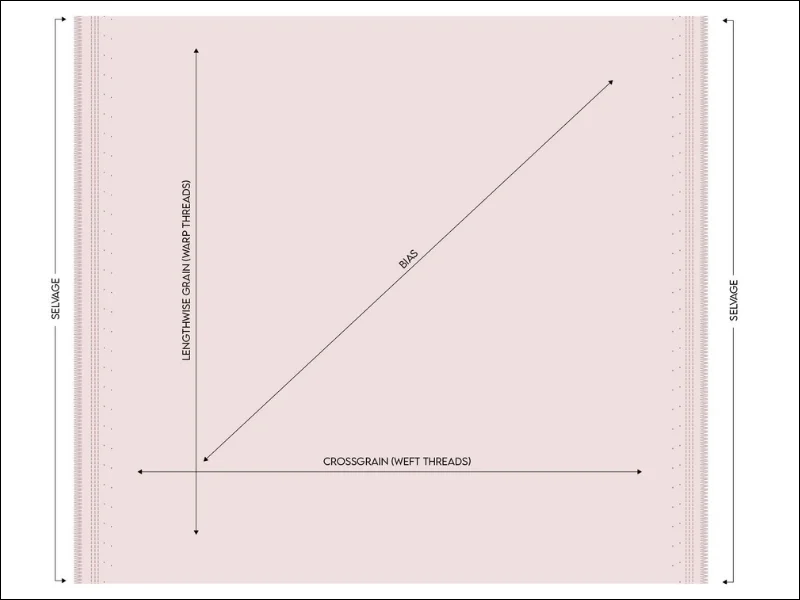
So, why would Packlove suggest a bias cut for your woven labels?
Softer feel & better drape: When fabric is cut on the bias, it can stretch a little more and is more flexible. This means a bias cut label from Packlove often feels softer. It will also hang or bend more smoothly with the clothes it’s on.
- Packlove Experience: “For baby clothes or soft t-shirts, bias cut labels feel much nicer against the skin.”
- Less fraying: For some kinds of woven fabric, cutting on the bias can help stop the edges from unraveling or fraying as much as a straight cut.
- Packlove Note: “Packlove also offers special ways to finish the edges of labels so they don’t fray, like heat sealing. But the bias cut itself can also help.”
- Unique look: Sometimes, if there’s a pattern in the fabric of the woven label, cutting it on the bias can make the pattern look a bit different and more interesting. It can give a special, high-quality look.
- Packlove Example: “If your Packlove woven label has thin stripes, a bias cut can make them look like a ‘V’ shape, which can be a nice design touch.”
5.3 When is bias cut good for Packlove woven labels?
A bias cut is a great custom product specification for Packlove woven labels when:
- The labels will be sewn onto soft or stretchy clothes (like silk shirts or jersey t-shirts).
- The labels will be put on curved parts of clothes (like the inside of a collar or an armhole).
- It’s very important for the label to feel super soft (like for baby clothes or underwear).
Packlove Expertise: “Our team can advise if a bias cut is a good idea for your specific labels and clothes, drawing on our expertise in technical specifications.”
6. Making better choices: Tips to reduce bias in your packaging design
6.1 Really know who you’re selling to
Don’t just guess! Find out about your perfect customer. Who are they (young, old, men, women)? What do they like? What do they expect from packaging for products like yours? The more you know them, the better you can design for them. This is important for how to design effective packaging that appeals to target audiences.
Packlove Question: “When you order packaging from Packlove, we might ask: ‘Who is going to buy your product?’ This helps us help you.”
6.2 Ask for different opinions
Don’t only ask your family or best friends. They might just say what you want to hear! Show your packaging ideas to people who are like your real customers. Ask them what they honestly think. This is part of audience-calibrated design.
Packlove Tip: “Maybe show two different designs for your Packlove stickers to a few potential customers and ask which one they like more and why.”
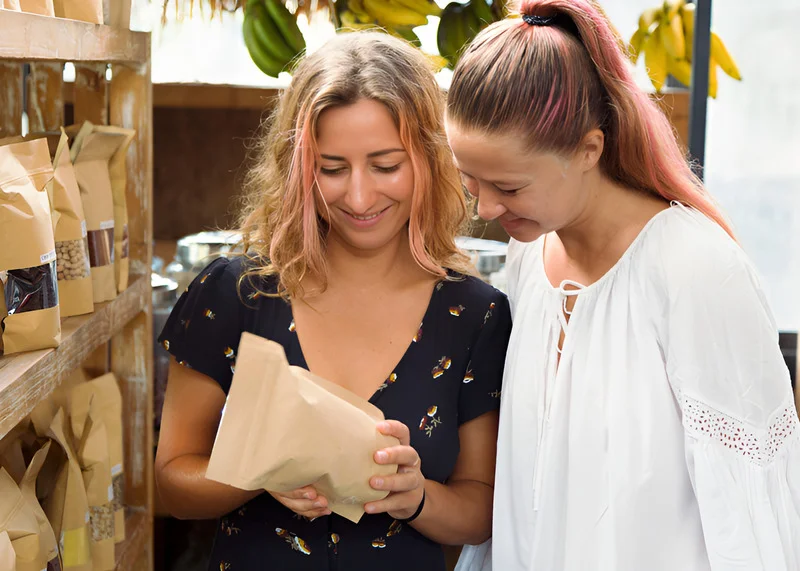
6.3 Look at what works
Instead of only using your gut feeling, do a little looking around. What packaging styles, colors, and materials are often used and work well for products like yours? For example, consider if certain materials are known to keep food items fresher.
Packlove Information: “Packlove knows a lot about different materials. For example, we can tell you which zipper bags are best for food, or which poly mailers are strong for shipping heavy items.”
6.4 Test your ideas
Before you order many custom tags or bags from Packlove, try to make a simple sample. You can print a design on paper and stick it on your product. Show it to a few people who are like your customers. How do they react? Do they understand it? Do they like it?
Packlove Connection: “With Packlove, you can often order a small number of items or get samples first. This lets you test your design before you order a lot.”
6.5 Be okay with changing your mind
This is a big one! If people tell you your favorite idea isn’t working well, or if your test shows it’s not good, be ready to change it. Don’t let anchoring bias (getting stuck on your first idea) or your personal taste stop you from choosing something better. This is about being objective and using clear criteria to counteract personal design bias.
Packlove Support: “It’s okay if your first idea for your Packlove labels isn’t the final one. The best design often comes after trying a few things!”
6.6 Talk to experts for an outside view
Sometimes, when you are working hard on your own project, it’s hard to see it clearly. Talking to packaging experts like the team at Packlove can give you new ideas and help identify potential design biases. We can give you ideas based on our experience with many different brands and products.
Packlove Offer: “If you’re not sure about your packaging design, you can talk to us at Packlove. We’re happy to help you think it through!”
7. How Packlove helps you make great, unbiased packaging choices
At Packlove, we don’t just sell packaging. We want to help you find the best packaging for you. Here’s how our products and help can make your choices less biased and better for your brand:
7.1 So many options
We have many different packaging items at Packlove: our handy Value Booster Kit (a curated set of various packaging samples or starter items), custom woven labels, easy-to-use heat transfer labels, special rubber labels, useful zipper bags, and strong poly mailers.
When you have many choices for material selection and custom product specification, you are not stuck with only one idea. This helps you avoid getting anchored to a single option that might not be the best. You can find what’s truly right for your brand when choosing the right material for custom labels and tags.
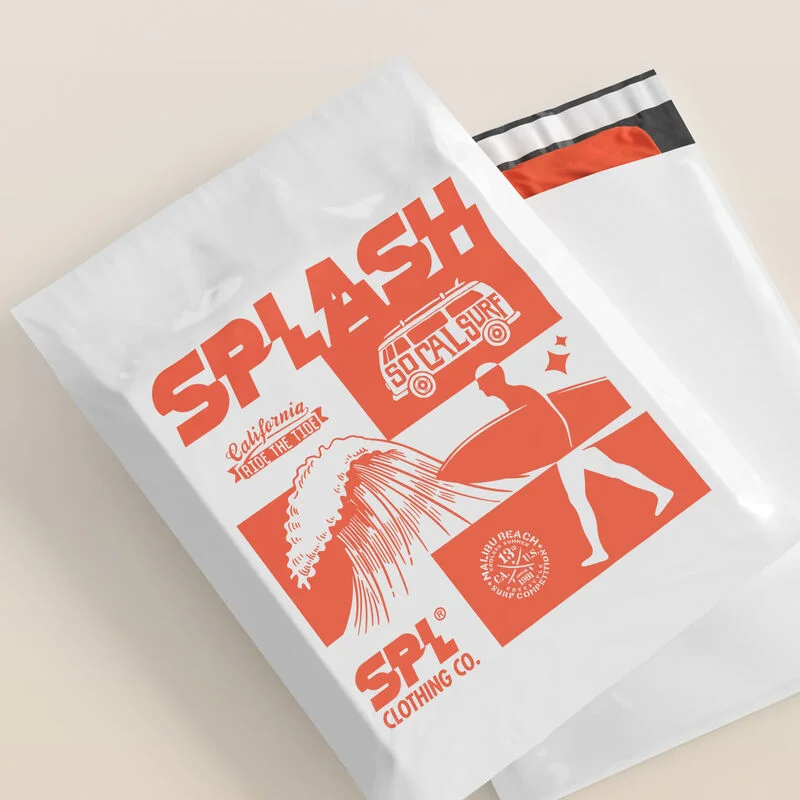
7.2 Make it yours (customization)
With Packlove, you can change almost everything – the material, size, shape, colors, and how it’s printed. When you customize, you have to think hard about what your brand needs and what your product needs. This helps you move away from general ideas that might be biased, and focus on what’s perfect for you.
7.3 See and feel first (samples)
Not sure if a material for your Packlove zipper bags will feel right? Or if the look of a woven label is good for your brand? Packlove offers a wide range of material samples. This helps challenge initial biases and inform better material choices. When you can hold a sample, you can choose based on what you see and feel, not just a guess or an old idea. This helps you avoid preconceptions in material choice.
7.4 Friendly advice from Packlove
Our Packlove team is here to listen! You can tell us about your product, your brand, and your customers. We can give you fresh ideas, show you options you didn’t think of, and help you make an “objective selection for packaging.” Our Packlove consultation aims for objective design decisions. This is because Packlove helps customers overcome material biases and design ideas that might not be the best.
8. Your questions answered (FAQ)
Have more questions? Here are simple answers to some common ones about bias and packaging:
8.1 What’s the most common mistake (bias) people make with packaging?
A very common one is design bias. This is when people design packaging based only on what they like, instead of thinking about what their customers will like. Another common bias is with material selection – people might pick a material because they think it’s best (maybe it’s trendy, or they heard something about it once), without checking if it’s really the most suitable for their specific product and brand. For example, choosing a delicate paper label for a bath product that will get wet.
8.2 How do I know if my personal taste is right for my brand’s stickers or labels?
That’s a great question! The best way is to get ideas from people who are like your ideal customers. Ask them what they think! Also, look at other successful brands that sell similar products to yours (not to copy, but to see what styles generally work). If your personal taste is similar to what your target customers like for that type of product, then it might be a good fit for your Packlove stickers or labels!
8.3 Is “bias cut” just for woven labels, or can other Packlove items like rubber labels use a similar idea?
“Bias cut” is a special term for how fabric is cut, so it really applies to our fabric woven labels from Packlove. For other Packlove items like our rubber labels, they are made flexible and get their shape from the rubber material itself and the special mold we use to make them. It’s not about a “cut” in the same way as fabric.
8.4 I’m on a tight budget. Isn’t it safer to just use packaging I already know, even if it’s a biased choice?
It might seem safer for a short time, but it could cost you more later if that “known” packaging doesn’t really work well for your brand. Packaging that isn’t effective can mean fewer sales or make your brand look not so good. Your decision-making processes should think about the best value, not just the first price.
Sometimes, a smart, small investment in the right packaging from Packlove, even starting with some key items from our Value Booster Kit, can make a much bigger, positive difference to your business.
8.5 How can Packlove help if I’m worried about making a biased choice for my poly mailers or other packaging?
We’re here to help with exactly that! By consulting with our team, we can help identify and address potential design biases. You can talk with our friendly Packlove team about your product (like what you’re shipping in your poly mailers), your brand style, and who your customers are.
We can give you an objective, outside opinion and suggest good materials, sizes, and designs that you might not have thought of. This helps you make a choice that is more informed and less biased. Worried about bias in your packaging choices? Let Packlove help! Contact us for a packaging consultation.
Read more:
Bias is a normal part of how we think. The important thing is to know about it. When you understand your possible biases, you can make much smarter, better choices for your product packaging. When you make choices carefully and try to lessen bad biases, your packaging will be much better at attracting the right customers.
It will show your brand well and help your business do better. We love helping you make packaging that you are happy with and that really works for your brand. Packlove customers get the help they need from us. Ready to create amazing, effective packaging? Visit Packlove now!






















